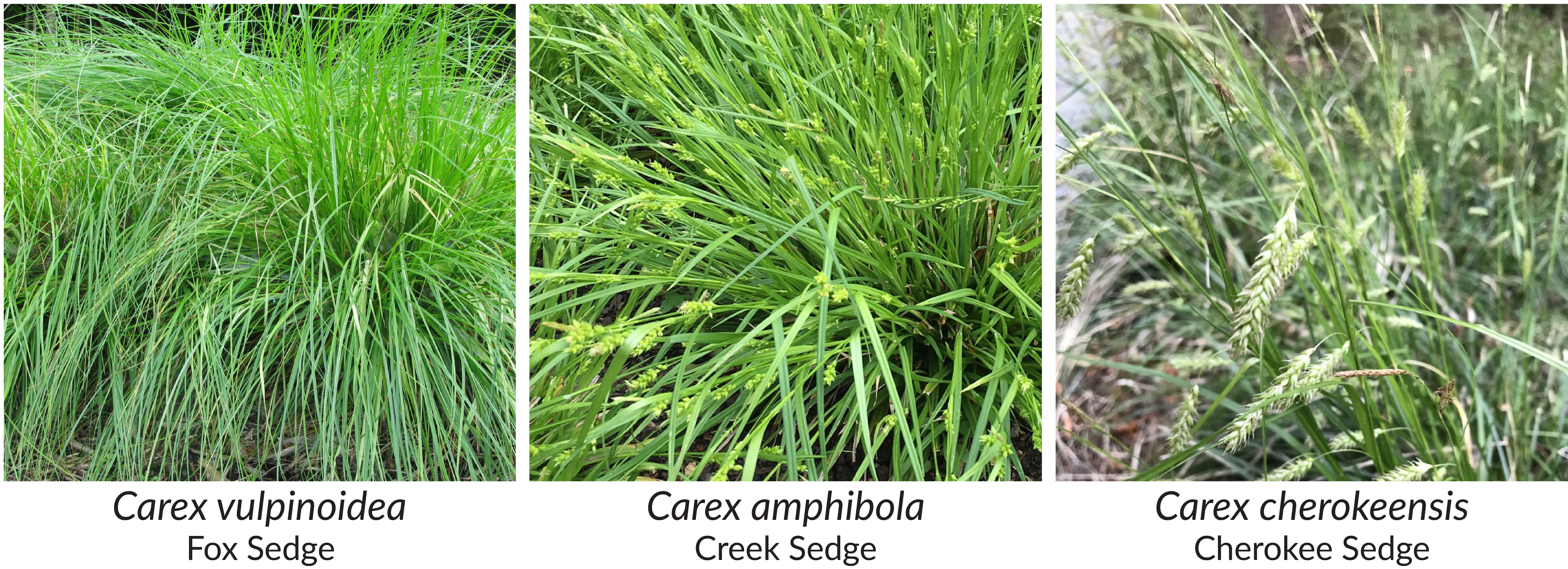Sedges for Rain Gardens
Sedges are go-to plants for all kinds of projects. This week we begin a series on these versatile plants. Our first post highlights sedges for rain gardens.
Read PostThe second post in our continuing series focuses on Carex for meadow and prairie plantings. Commonly known as sedges, Carex lend themselves to all kinds of uses, from rain gardens to colorful containers. Find out why they make sense for your growing program, green infrastructure projects, and for the ecological landscape market.

Meadow and prairie plantings create low-maintenance areas with added ecological value. Densely planted areas like these reduce and filter storm water runoff, increase infiltration, support a rich variety of wildlife, and add green space in urban areas. We consider them a vital part of green infrastructure.

How can prairies and meadows be used? Property managers of corporate office parks might put in a meadow instead of a vast stretch of turf grass. Homeowners can create low-mow areas with prairie species. A continuously wet, difficult site can host a lush wet meadow. These meadow and prairie plantings invite pollinators and are low-maintenance.
What are meadow and prairie plantings? They are usually open communities of grasses, sedges, and wildflowers, with few trees. Most of the sedges we grow for meadows and prairies thrive in moist-to-wet conditions, so they’re excellent filler plants for wet meadows. However, a few, such as Carex texensis, do well in drier areas. Plant selection must be tailored to the site conditions to be successful.
Carex cherokeensis (Cherokee Sedge) works in average to wet soils, and grows well in part-shade conditions. It can handle more sun with more moisture. Cherokee Sedge has impressed us with its resiliency. In our trial gardens, it bounced back quickly after a hot, dry, late summer and stayed mostly evergreen through winter. It has a clumping habit, but spreads via short rhizomes and by reseeding. It’s competitive, which is often a plus in larger plantings.

C. amphibola (Creek Sedge) is also resilient, and does well in a wide range of conditions. It’s found in bottomlands, uplands, and habitats in between. Topping out at 1.5 feet, it’s one of the shorter sedges we grow for meadows and prairie plantings. For wet meadows, C. vulpinoidea (Fox Sedge) is a tall, vigorous pioneer species that spreads easily into colonies. It’s fantastic for holding the soil and stabilizing the site. Its foxtail-like spikelets are responsible for the common name and specific epithet.
These are a few of the possibilities. Find more sedges for meadow and prairie plantings on our website.
Projects that include meadow and prairie plantings, and other green infrastructure features, are growing. Sedges make sense if you’re looking to grow, too.
Get Current Availability: Excel Download |PDF Download